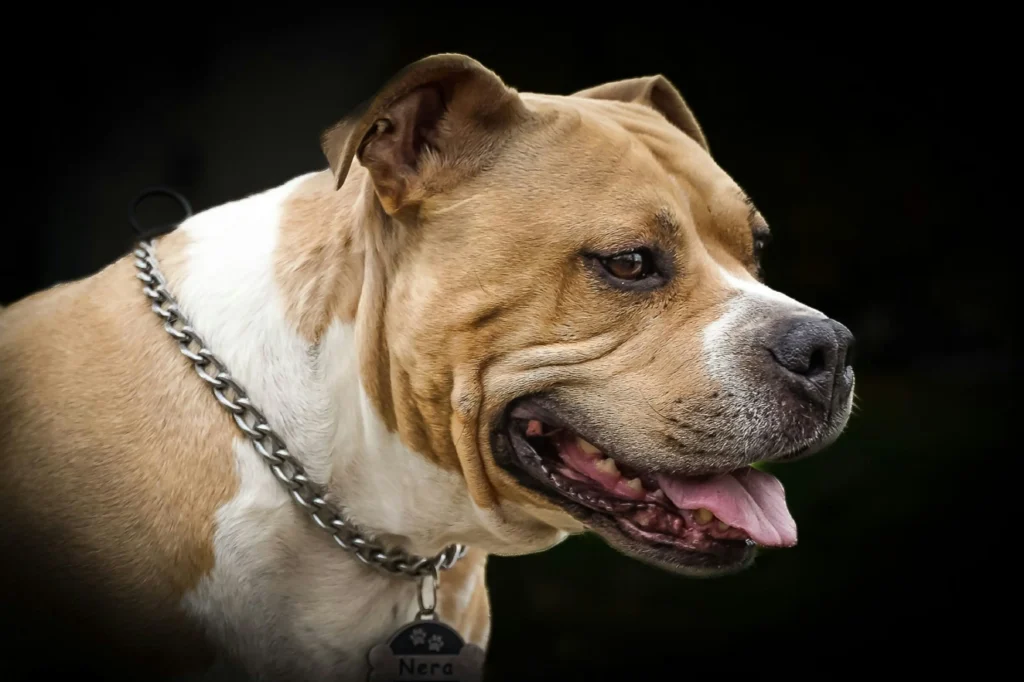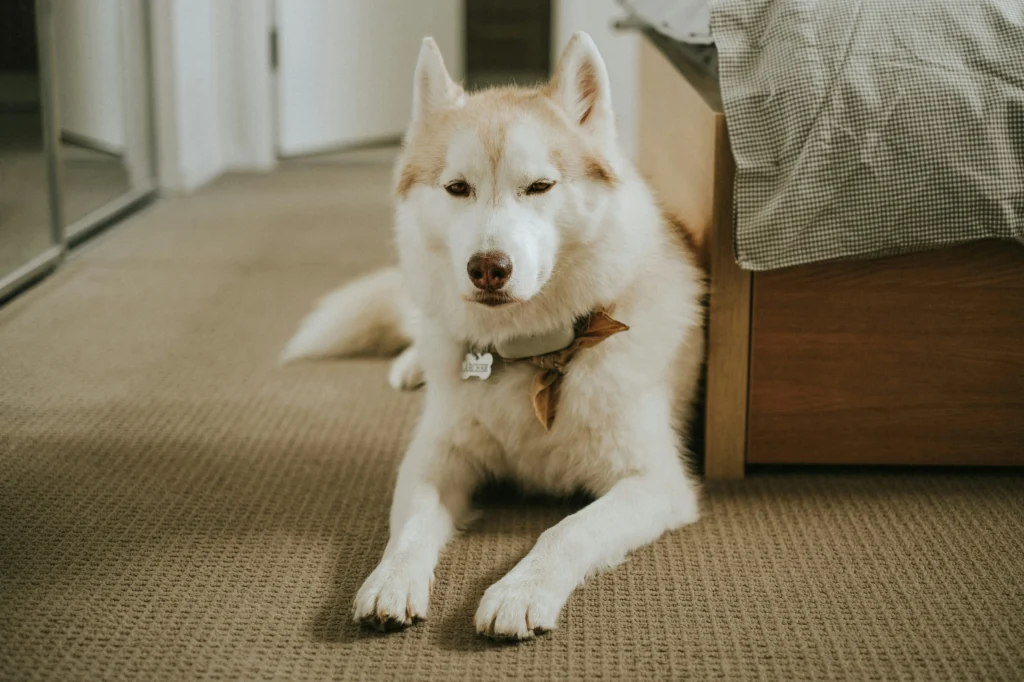Last updated: October 5, 2025
Quick Answer
On most small, bone-shaped dog tags, you can expect about 3–4 lines per side with roughly 12–15 characters per line. Capacity varies by brand, font, and whether the tag is engraved on one or both sides. For best readability, keep lines short, put the primary phone first, and spread details across both sides.
Key Takeaways
- Plan for 3–4 lines per side on a small bone tag; some small tags cap out at 3 lines total—check the product size chart before you order.
- 12–15 characters per line is a safe working range; fewer characters mean a larger, clearer font.
- Use both sides: front for the essentials (name + primary phone), back for secondary items (backup phone, city/state, “Microchipped”).
- US vs UK: In the US, phone numbers and city/state are standard. In the UK, the owner’s name and address must appear on the collar/tag; a phone number is strongly encouraged.
- Tags complement a registered microchip and up-to-date registration, they don’t replace them.
- Before you buy, paste your wording into the Bone
For health concerns, consult your veterinarian.
Why capacity isn’t one-size-fits-all
“Small” varies—by brand, by material, and even by the font a vendor uses. A stainless steel small bone might offer four shorter lines on each side, while a coated tag labeled “small” elsewhere may allow only three lines total. That’s why it’s helpful to think in ranges and then check the exact size chart before you click “buy.”
Two other factors matter:
- Font choice and letter shapes. Tall, narrow fonts squeeze more characters into a line than rounded or bold fonts.
- Engraving on both sides. If a tag supports two-sided engraving, you can keep each line shorter (and therefore bigger) by splitting information front and back.

What to engrave (and what to skip)
If you run out of space, use this simple priority order:
- Primary mobile number — the fastest way a finder can reach you.
- Backup number — a second adult in the household or a trusted friend.
- City, State — helpful context for a finder and often enough for many US situations.
- “Microchipped” — a cue to scan if the finder reaches a vet or shelter.
Optional: Pet name. If you’re fighting for space on a small tag, some owners prioritize contact details over the name. If you include the name, keep it on the front and move numbers to the back so they stay large.
UK readers: The Control of Dogs Order 1992 requires owner name and address on the collar or tag. The Kennel Club recommends adding a phone number for speed. It’s still wise to keep the layout clean and readable.
- AKC, on ID basics and why tags still matter: https://www.akc.org/expert-advice/home-living/id-tags-enough-importance-identifying-dog/
- The Kennel Club (UK), essential equipment (includes the legal tag wording): https://www.thekennelclub.org.uk/getting-a-dog/buying-a-dog/essential-equipment-for-your-puppy-or-dog/
Engraving layout ideas (US and UK)
US – Two-sided layout
Front: PET NAME • PRIMARY PHONE
Back: BACKUP PHONE • CITY, ST • “Microchipped”
UK – Two-sided layout
Front: SURNAME • HOUSE NO + POSTCODE
Back: MOBILE • “Microchipped” (optional)
These short lines typically fit within the 12–15 character guideline and keep digits large. If your vendor allows only one side, trim the wording and prioritize primary phone and the legally required elements for your region.
Readability tips that matter more than one extra line
- Fewer characters per line = larger font. If a tag offers four lines, it doesn’t mean you should use all four on both sides. Two or three short lines often look better and read faster.
- Avoid long ALL-CAPS lines. Mixed case is usually easier to scan at small sizes.
- Use simple separators like a dot (•) or a vertical bar (|). They’re clean and space-efficient.
- Be cautious with punctuation. Commas, dashes, and parentheses eat characters without improving clarity.
- Check the proof carefully. Many engravers show a preview. This is where transposed digits get caught—before the tag ships.
- Test both versions side-by-side.
Table: Identification snapshot (US vs UK) and typical capacity
| Authority / Context | Required / Recommended Wording | Notes for Small Bone Tags |
|---|---|---|
| AKC (U.S.) – ID guidance | Prioritize primary phone; consider backup phone, city/state, and noting “Microchipped.” | Tags plus microchip = two ways to reach you. Keep lines short for bigger digits. https://www.akc.org/expert-advice/home-living/id-tags-enough-importance-identifying-dog/ |
| The Kennel Club (UK) / UK law | Owner’s name and address must appear on collar or tag; phone number strongly recommended. | Keep address concise (house number/postcode) to preserve font size. https://www.thekennelclub.org.uk/getting-a-dog/buying-a-dog/essential-equipment-for-your-puppy-or-dog/ |
| Typical small bone capacity | ~3–4 lines per side; ~12–15 characters per line | Capacity varies by brand and font; double-sided engraving helps keep text large. |
Photo ID checklist (for rentals, airlines, training forms)
You won’t need this every day, but when someone asks for “proof of ID on the dog,” you’ll be glad you have it ready.
- Lighting: Take photos in bright, indirect daylight so digits are crisp.
- Background: Use a plain wall or tabletop (avoid pattern that competes with the characters).
- Angles:
- Front of tag (close enough to read digits)
- Back of tag (close enough to read digits)
- Tag hanging at collar height for a real-world view
- File names: “DogName_YYYY-MM-DD_TagFront.jpg” and “…TagBack.jpg” so you can find them in seconds.
How to get the most from a “small” tag
Small tags are light and less clacky on the collar, but they demand tighter editing. A few practical ways to optimize:
- Choose a two-sided tag. It’s the easiest way to keep lines short and legible.
- Trim the city/state. “Brooklyn, NY” reads better than a full street address in the US.
- Keep one number primary. The finder should instantly know which number to try first.
- Re-order as life changes. Moved? New phone? Re-engrave promptly. A tag with the wrong number is work without payoff.
- Carry a backup. If your dog wears a harness for walks, keep a second tag attached to the harness in case the collar rotates or the tag ring breaks.

Microchip and tag: a two-layer system
A visible tag solves the fastest problem: a friendly neighbor finds your dog and calls you directly. A microchip solves the tougher scenario: your dog is taken to a clinic or shelter that can scan the chip and pull your contact details. Both layers work only if the information is current. After your move or number change, update both your microchip registry and your tag—the same week.
- AKC on why tags still matter alongside microchips: https://www.akc.org/expert-advice/home-living/id-tags-enough-importance-identifying-dog/
Maintenance is part of identification
It’s not just what the tag says; it’s whether the tag is still attached and readable.
- Check the split ring or S-hook. If it’s stretched or thinning, replace it.
- Clean the tag surface. Wipe with a soft cloth; avoid harsh abrasives that dull engraving.
- Consider a tag silencer if noise bothers you; just make sure it doesn’t obscure the engraving.
- Re-shoot your tag photos after any update so your digital “ID set” stays accurate.
When a bigger tag makes sense
If you keep hitting the character limit—or if you need to include multiple contact numbers and a travel note—step up a size. A medium tag often gives you another line or two and longer lines before the font shrinks. The goal isn’t to squeeze in everything; it’s to make sure the essentials are instantly readable.
Responsible ownership, not hype
A polished tag won’t fix everything, but a clear one helps lost dogs get home faster. Skip novelty quotes and long slogans on a small tag; keep it serious and straightforward. In the US, lean on the AKC guidance for what matters most. In the UK, follow the legal wording from The Kennel Club’s resources and add a phone number so finders can reach you immediately.
This is also a good moment to check that your other paperwork—registration, microchip details, a simple photo set—is tidy and stored in one place. That way, when a landlord or airline asks for ID, you’re done in under a minute.
FAQs
How many lines actually fit on a small bone tag?
Most small bone tags support 3–4 lines per side (if double-sided) or 3 lines total on single-sided versions. Always check the size chart for the “small” option you’re buying.
How many characters should I plan for per line?
As a rule of thumb, 12–15 characters per line keeps the font readable. If you can go shorter, do it—your phone digits will be larger.
Is two-sided engraving worth it?
In most cases, yes. Splitting information across front and back allows shorter lines and a bigger font on each side.
What should US owners put on the tag?
Primary phone first, then a backup phone. City and state help. If space allows, adding “Microchipped” can prompt scanning in a clinic or shelter.
What does UK law actually require?
The Control of Dogs Order 1992 requires that the owner’s name and address appear on the collar or tag. A mobile number is highly recommended to speed up reunions.
Should I include my dog’s name?
It’s optional. If space is tight on a small tag, many owners prioritize contact details over the pet name, or keep the name alone on the front and move numbers to the back.
What punctuation is best?
Use simple separators like a dot (•) or vertical bar (|). They’re compact and keep the focus on numbers and letters.
Sources used
- AKC — Are ID Tags Enough? The Importance of Identifying Your Dog: https://www.akc.org/expert-advice/home-living/id-tags-enough-importance-identifying-dog/
- The Kennel Club (UK) — Essential equipment for your puppy or dog (includes legal tag wording): https://www.thekennelclub.org.uk/getting-a-dog/buying-a-dog/essential-equipment-for-your-puppy-or-dog/



